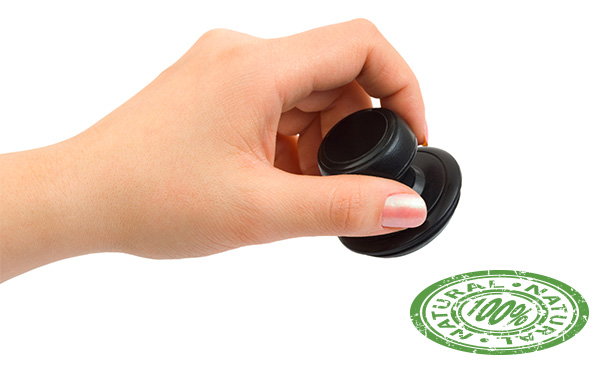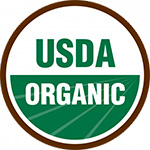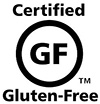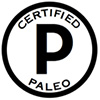 Zoonar/Thinkstock
Zoonar/Thinkstock

What's in a name? Here's some background on common food labels, and why they matter. #vegan #halal #paleo #glutenfree
In a utopian world, labels would simply and clearly disclose a food’s ingredients, nutrition facts, and how and where the product was made. But despite federal laws governing some food-labeling aspects (such as the Nutrition Facts panel and food-allergy warnings), a lot of packaging info remains foggy.
To counteract confusion and misinformation, third-party badges, seals, and labels promising transparency, traceability, and authenticity are on the rise. Here’s some background on the big issues.
“Natural” on the ropes
The first sticky wicket: “Natural” means, technically and legally, absolutely nothing. In 1993, the FDA, after reviewing “a wide range” of comments on the meaning of “natural,” declined to define the term and chose merely to maintain its policy not to restrict its use “except for added color, synthetic substances, and flavors.” (Vague enough for you?)
Today, in the absence of clear legislation, high-profile brands are coming under fire from disgruntled consumer groups claiming that “all natural” ain’t all that. Popchips just shelled out $2.4 million over its “all-natural” claim; in May, Kashi and Bear Naked agreed to settlements and to stop using the terms “all natural” and “nothing artificial” in products that contain synthetic ingredients such as hexane-processed soy compounds, ascorbic acid, and sodium phosphate. In the biggest settlement to date, Pepsi’s Naked Juice paid $9 million in 2013 for similar offenses. (So far, no “all-natural” suit has gone to trial.)
The latest news: In July, the newly formed Organic and Natural Health Association (ONHA), a coalition of consumer and business experts, announced plans to define “natural” and provide a certification program for foods, cosmetics, personal care items, and pet products. The urgency is obvious, says ONHA director and spokesperson Karen Howard: “Consumers are so confused, and the courts are dealing with this on such a regular basis.”
Non-GMO ascending
Genetically modified organisms (GMOs) represent another label challenge. The recently launched OnlyOrganic.org, supported by organic mainstays like Stonyfield and Happy Family, points out that currently “all-natural” products can still harbor harmful pesticides, hormones, and GMOs—unlike USDA Organic certified products. Even more striking, the Grocery Manufacturers Association says foods with a “natural” label should be allowed to include GMOs. In January, the FDA declined to weigh in on whether GMOs belong in “all-natural” products, but “that does not mean the FDA will never wade into these waters, particularly if the explosion of ‘all-natural’ litigation continues in the next several years,” says Jeff White, a partner at Robinson & Cole LLP who defends manufacturers and distributors (and coauthors Manufacturing LawBlog.com).
 Non-GMO ingredients are less expensive than fully certified organic ingredients, so a Non-GMO Project Verified seal is one way food makers gain loyalty without excess cost. And it’s catching on: Recent consumer research found that 19 percent of shoppers seek foods labeled non-GMO, while just 16 percent hunt for the organic label.
Non-GMO ingredients are less expensive than fully certified organic ingredients, so a Non-GMO Project Verified seal is one way food makers gain loyalty without excess cost. And it’s catching on: Recent consumer research found that 19 percent of shoppers seek foods labeled non-GMO, while just 16 percent hunt for the organic label.
In fact, the Non-GMO Project’s seal is the fastest growing label in natural products, representing $6 billion in annual sales and more than 16,000 verified products.
USDA Organic today
Though non-GMO is ascending, organic sales continue to soar and are on track to reach an estimated $33 billion in 2014, according to Nutrition Business Journal. With stores like Target, Costco, and Walmart committing to sell more USDA Organic items, organic is no longer fringe. That’s arguably good for everyone—more organic farming means improved access for all incomes and demographics.
 But with organic standards firmly in the government’s hands and influenced by deep-pocket lobbying power, some fear that organic standards could fray. At a recent National Organic Standards Board meeting, Alexis Baden-Mayer, political director of the Organic Consumers Association, was arrested for protesting changes to organic standards. “It’s clear that we need a new balance of power between the organic community and the organic industry,” wrote the OCA in a statement. But for now, thanks to OCA and other watchdog groups, that green-and-white seal is backed by stringent, regulated farming standards and still guarantees environmentally sound food production no matter where it’s sold.
But with organic standards firmly in the government’s hands and influenced by deep-pocket lobbying power, some fear that organic standards could fray. At a recent National Organic Standards Board meeting, Alexis Baden-Mayer, political director of the Organic Consumers Association, was arrested for protesting changes to organic standards. “It’s clear that we need a new balance of power between the organic community and the organic industry,” wrote the OCA in a statement. But for now, thanks to OCA and other watchdog groups, that green-and-white seal is backed by stringent, regulated farming standards and still guarantees environmentally sound food production no matter where it’s sold.
More labels in the spotlight

Certified Gluten-Free. This seal from a Gluten Intolerance Group program assures that a product contains 10 parts per million (ppm) or less of gluten.

Certified Halal. Adheres to Islamic dietary guidelines that prohibit pork, gelatin, carnivorous animals, alcohol, and more. Certified by The Islamic Food and Nutrition Council of America (IFANCA).

Kosher Certification. Verifies manufacturing in accordance with kosher law, which includes strict standards on humane slaughtering methods and more.

Certified Paleo. Ensures that a product meets paleo diet tenets: no legumes, grains, dairy, preservatives, added flavors, or artificial colors or sweeteners.

Certified Vegan. Indicates no meat, fish, fowl, eggs, dairy, honey, or silk or dyes from insects are in a product or used during production.
